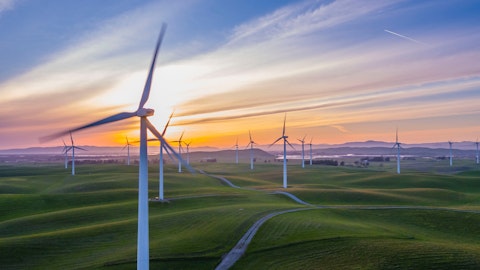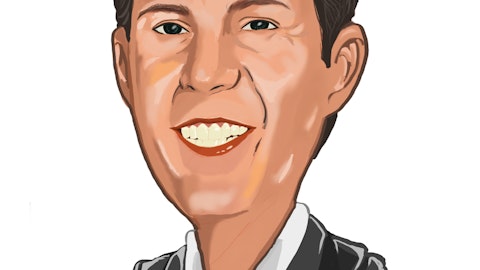Nate Pendleton: Thanks. And if I could sneak in one quick follow-up regarding the CCS investment guidance for 2023. Can you speak to how much of that is related to pore space acquisitions and how you expect that overall CCS investment to trend beyond 2023?
Robin Fielder: I mean the leasehold acquisition and even some of our annual renewals is a portion of that, but we are planning to be drilling some of the strat wells. So this year will we will be collecting data including some addition of some seismic data, drilling the stratigraphic test wells, we will collect both logging-in core data. All of this is to supplement what we want to hope to be a very robust EPA Class 6 permit application. I will also be engaging in some pre-FEED and front-end engineering design that Tim mentioned in his prepared remarks. So, it’s really all these activities that help advance the projects, help develop the storage sites, get us set up for these permits that gives our customer base, the comfort that these projects are going to make it and that they’re going to be highly successful in these regions.
Nate Pendleton: Great. Thanks for taking my questions.
TimDuncan: You got it.
Operator: Our next question comes from Subash Chandra with Benchmark Company. Please go ahead.
Subash Chandra: Yes. Hi, Tim. Hi, everybody. Maybe just a follow-up. Good morning. On CCS, broadly speaking, how would you handicap 2023 if you get to sort of favor one project versus another or a major contract that you might see that progress? And then secondly, I guess on Chevron specifically, is there a midstream partner in the works there? Do you need one there? Then I have a follow-up. Thanks.
Robin Fielder: Hi, I’ll jump on that Subash, thanks for the question. Broadly, I’ll say that we’re actively participating in RFPs with industrial partners across our portfolio, also and some one-off negotiations on some term sheets on I’ll say both brownfield emissions and potential greenfield new investments. So that’s very exciting for us. I think as you just kind of look at these industrial regions. One of the reasons we’re so excited about this additional leasehold in East Texas is it’s ability to address to industrial corridors not only the Beaumont Port Arthur region, but now also the Eastern Houston Ship Channel. So we think there’s going to be a lot of good progress made across this portfolio and so that’s why we’re excited about that.
I’m sure with Chevron. They certainly have capabilities all across the value chain. They’ve got Chevron pipeline and power. One of my predecessor companies, Noble Midstream Partners got folded into that entity. So we haven’t decided yet. They certainly can take that on. We can work with third-party midstream companies that are all thinking about how they’re going to position themselves to move CO2 for the future.
TimDuncan: Yes, one way to think about this Subash at least as I think about it, you look at the core areas that we’ve been focusing on the Corpus Christi area, the Southeast Texas, which is kind of the Ship Channel Beaumont, Port Arthur and then around the river in Louisiana and you have to ask yourself, is there an inevitability that this market can make. Is there an emission source? Is there a will? And then from there, you asked the question is where they’re going to put it in here, you’re going to partner with and we’ve tried to first show that inevitability by making sure people understand the breadth of these markets and then now you look at the accumulation of storage infrastructure. And so your question is a good one on the midstream.





